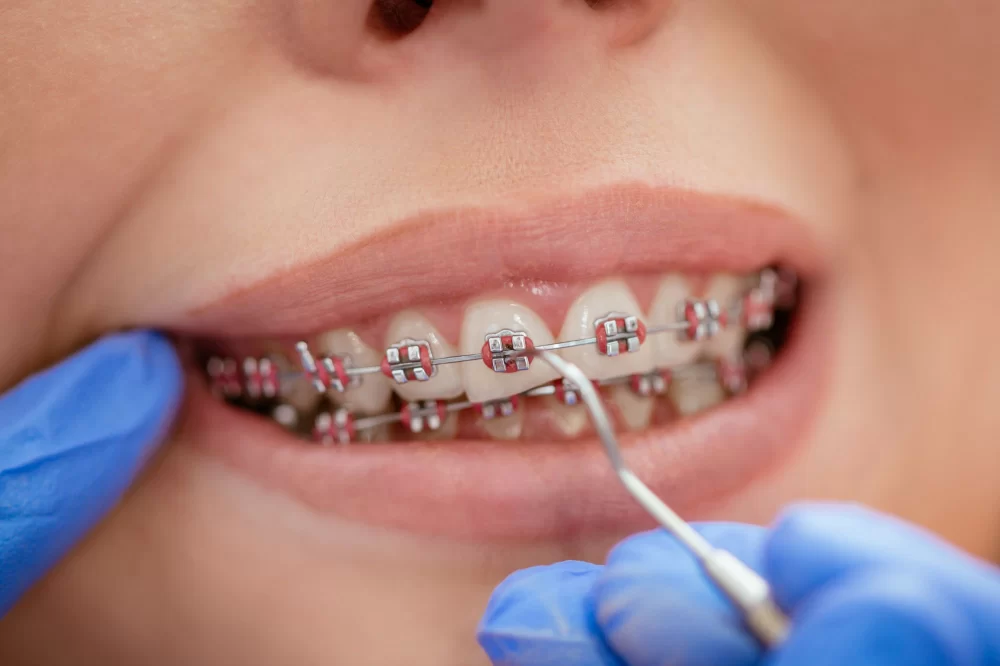
Understanding How Dental Insurance Works for Orthodontics
When I first looked into getting braces for my daughter, I quickly realized that navigating the world of dental insurance for orthodontics is a bit more complicated than I expected. As a parent, I wanted to ensure that I understood how my insurance plan worked, what it would cover, and how I could make the most of it. The last thing I wanted was to face unexpected costs or find out that the treatments weren’t covered after we had already started. In this article, I’ll share what I’ve learned about dental insurance for orthodontics and how you can navigate your own insurance plan to make sure you get the best coverage for braces and other orthodontic treatments.
1. What Does Dental Insurance for Orthodontics Cover?
Dental insurance for orthodontics typically covers the costs associated with braces and other orthodontic treatments. However, what is covered can vary widely depending on the insurance plan. When I was looking at options, I discovered that many plans offer coverage for both children and adults, but with different terms and conditions.
Generally, dental insurance plans for orthodontics will cover a portion of the treatment cost, usually between 50% and 80%. However, there are usually limits on how much your plan will pay out. For example, some plans have a lifetime maximum benefit for orthodontics, which could range from $1,000 to $2,500. This lifetime cap is the maximum amount the insurance will pay toward orthodontic treatment over the course of a person's life, and once it’s reached, you’re responsible for paying the remainder of the cost.
It’s important to note that not all dental insurance plans offer orthodontic coverage, and many will only cover children’s braces under certain conditions. Some plans may have exclusions for cosmetic treatments or adult braces, so it’s essential to carefully review your policy to see what’s included. I found that speaking directly with my insurance provider helped me get a clear understanding of my specific coverage.
2. When Does Insurance Cover Orthodontic Treatment for Children?
One of the first questions I had when we started discussing braces for my daughter was, “At what age can I start using my insurance for orthodontics?” After speaking with our pediatric dentist and my insurance company, I learned that most insurance plans will cover orthodontic treatment for children, typically starting at age 7. This is because orthodontic treatment is often most effective when started early, before all of the adult teeth have come in.
However, the catch is that your child’s orthodontic treatment needs to be deemed medically necessary, rather than purely cosmetic. For instance, if your child has severe alignment issues or bite problems that affect their ability to chew or speak properly, these could be considered medically necessary. In contrast, treatment for mild cosmetic issues may not be covered by insurance.
In our case, my daughter was eligible for coverage once her orthodontist determined that her overbite would affect her long-term dental health. The insurance company approved the treatment because it was considered medically necessary. But, of course, every insurance plan and provider is different, so be sure to check with your insurer to understand the specifics of what they will cover for your child.
3. How Does Orthodontic Coverage Work for Adults?
As I began looking into orthodontics for myself, I quickly learned that adult coverage is a different story. While it’s becoming more common for dental plans to offer orthodontic benefits for adults, the coverage is often more limited than what’s available for children. Most plans will only cover adult braces if there’s a significant health issue involved, such as a bite problem that affects eating or speaking. If your orthodontic treatment is considered cosmetic, it's less likely to be covered.
Even if adult braces are covered, the coverage might come with stricter limitations. For example, some insurance plans will only provide coverage for the first year of treatment, after which the patient is responsible for the remaining costs. Another thing to be aware of is that some insurance companies may have higher out-of-pocket costs for adult orthodontics, even if the treatment is partially covered.
In my case, when I considered adult braces, I found that my dental insurance would cover a portion of the treatment if my bite issues were classified as medically necessary. However, for cosmetic orthodontics, I had to be prepared to pay for most of the costs out-of-pocket. It’s a good idea to carefully review your policy and speak with your orthodontist about your treatment options to get the most out of your coverage.
4. What Are the Common Limitations of Orthodontic Insurance Coverage?
While dental insurance for orthodontics can save you a lot of money, it’s important to be aware of the common limitations that could affect your treatment plan. Here are some of the most common limitations I came across when researching orthodontic coverage:
1. Lifetime Maximum: As mentioned earlier, many dental insurance plans for orthodontics have a lifetime cap on benefits. Once you hit this cap, you’re responsible for paying any additional costs.
2. Age Limits: Some insurance plans may have age restrictions, only offering coverage for children under the age of 18. However, this is changing as more adults seek orthodontic care.
3. Waiting Periods: Many plans have a waiting period for orthodontic coverage. This means that you may need to be enrolled in your plan for a certain amount of time before you’re eligible for orthodontic benefits. I found that some plans require a waiting period of 6 to 12 months.
4. Coverage for Cosmetic Procedures: If your braces are being used for purely cosmetic reasons, there’s a good chance that your insurance won’t cover the costs. I quickly realized that many of the cosmetic options, like clear aligners or aesthetic braces, weren’t covered by my plan, so I had to weigh the benefits and costs carefully.
5. How to Maximize Your Orthodontic Benefits
One of the most important things I learned during my search for orthodontic coverage is how to maximize the benefits my insurance provides. Here are some tips that helped me:
1. Get Pre-Authorization: Before starting treatment, ask your orthodontist to submit a pre-authorization request to your insurance company. This will help you understand what is covered and what you’ll be responsible for paying. I found that pre-authorization helped avoid surprises down the road.
2. Understand the Payment Plan: If your insurance doesn’t cover the full cost of treatment, talk to your orthodontist about payment options. Many orthodontists offer flexible payment plans to help spread out the cost of treatment over time.
3. Utilize Health Savings Accounts (HSAs) or Flexible Spending Accounts (FSAs): If your employer offers an HSA or FSA, consider using these funds to pay for orthodontic treatment. These accounts allow you to use pre-tax dollars, which can help reduce your overall out-of-pocket costs.
4. Check for Discounts: Some orthodontists offer discounts for paying in full upfront or for referrals. Don’t hesitate to ask about any discounts or promotions that could help lower your costs.
Understanding how dental insurance works for orthodontics can make a big difference in how much you pay for braces or other orthodontic treatments. By knowing what your plan covers, how to work with your insurance provider, and how to maximize your benefits, you can ensure that you’re getting the most out of your coverage.







 United Smiles4.0 (66 review)
United Smiles4.0 (66 review) A-Z Dental Art Studio4.0 (50 review)
A-Z Dental Art Studio4.0 (50 review) Powell Family Dental4.0 (28 review)
Powell Family Dental4.0 (28 review) Jefferson Urology Associates2.0 (32 review)
Jefferson Urology Associates2.0 (32 review) Westbury Dental Spa4.0 (376 review)
Westbury Dental Spa4.0 (376 review) Universal Dentistry4.0 (144 review)
Universal Dentistry4.0 (144 review) The Importance of Oral Health Education During Pregnancy for a Healthy Pregnancy
The Importance of Oral Health Education During Pregnancy for a Healthy Pregnancy Best Tips for Brushing Your Teeth Properly for Healthy Gums: Essential Techniques for Oral Health
Best Tips for Brushing Your Teeth Properly for Healthy Gums: Essential Techniques for Oral Health Why Skipping Dental Checkups Can Lead to Bigger Oral Health Problems
Why Skipping Dental Checkups Can Lead to Bigger Oral Health Problems Advantages of Porcelain Dental Restorations
Advantages of Porcelain Dental Restorations How Can Diabetes Cause Tooth and Gum Problems? Preventing and Managing Oral Health Issues
How Can Diabetes Cause Tooth and Gum Problems? Preventing and Managing Oral Health Issues Healthy Habits for Promoting Good Oral Health and Hygiene: Tips for a Healthy Smile
Healthy Habits for Promoting Good Oral Health and Hygiene: Tips for a Healthy Smile